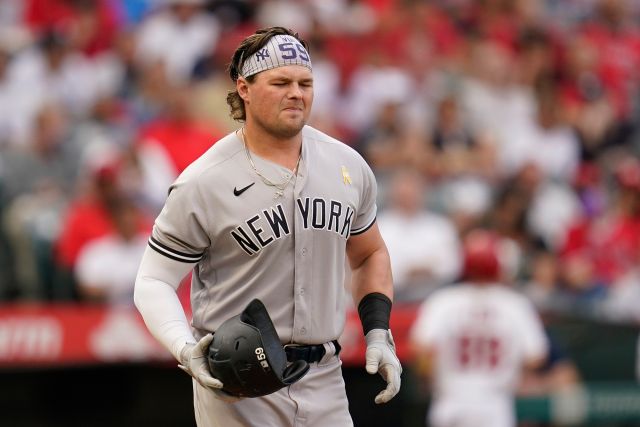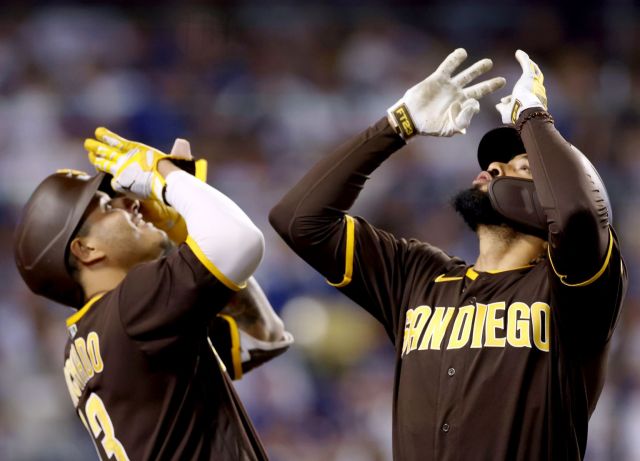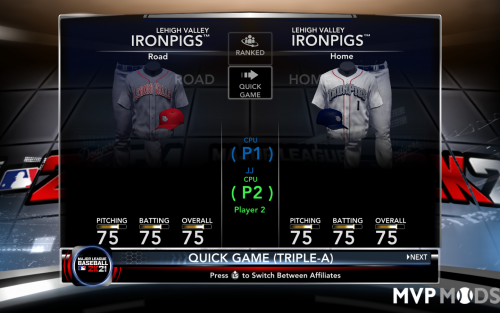Tony Conigliaro
No matter how you measure it, Tony Conigliaro’s career got off to a terrific start, but tragedy repeatedly intervened and the great promise of his early years remained unfulfilled. A local boy made good, Tony was born and raised in the Boston area, signed with the hometown team, and made his major-league debut in 1964 soon after he turned 19 years old. In his very first at-bat at Fenway Park, Tony turned on the very first pitch he saw and pounded it out of the park for a home run. By hitting 24 home runs in his rookie season, he set a record for the most home runs ever hit by a teenager. When he led the league in homers with 32 the following year, he became the youngest player ever to take the home-run crown. When he hit home run number 100, during the first game of a doubleheader on July 23, 1967, he was only 22 – the youngest AL player to reach the 100-homer plateau. He hit number 101 in the day’s second game.
Conigliaro’s first major-league game was in Yankee Stadium on April 16. In his first major-league at-bat, against Whitey Ford, he stepped into the box with men on first and second, and grounded into a double play. His third time up, he singled and finished the day 1-for-5. The next day, April 17, was the home opener at Fenway Park. Tony was batting seventh in the order, facing Joe Horlen of the White Sox. He swung at Horlen’s first pitch and hit it over the Green Monster in left field, and even over the net that hung above the Wall. Tony Conigliaro, wearing number 25, took his first home-run trot. Tony told writers afterward that he always swung at the first good pitch he saw. “I don’t like to give the pitcher any kind of edge,” he said.
In that same spirit, Conigliaro crowded the plate. And pitchers, quite naturally, tried to back him off the plate. He was often hit by pitches, and suffered his first injury on May 24 when Kansas City’s Moe Drabowsky hit him in the left wrist, causing a hairline fracture. Fortunately, Tony missed only four games.
Back in the lineup, back pounding out homers, Tony hit number 20 in the first game of a July 26 doubleheader against Cleveland. In the second game, he got hit for the fifth time in the season, by Pedro Ramos. It broke his arm. This time he missed a month, out until September 4. Conigliaro finished the season with 24 homers and a .290 average.
In 1965, under manager Billy Herman, Tony played in 138 games and hit 32 more homers, enough to lead the league, though his average dipped to .269. During the June free-agent draft, there was more good news for the Conigliaro family: The Red Sox used their first pick to select Tony’s younger brother, Billy. Tony was struck yet again by a ball on July 28, when a Wes Stock pitch broke his left wrist. It was the third broken bone Tony had suffered in just over 14 months. He simply refused to back off the plate. Orioles executive Frank Lane intimated that Red Sox pitchers could defend Tony a bit better by retaliating.
Suffering no serious injuries in 1966, Tony got in a very full season, seeing action in 150 games. He banged out 28 homers and drove in 93 runs, leading the league in sacrifice flies with seven. His average was .265 and the Boston writers voted him Red Sox MVP. The Red Sox as a team, though, played poorly in these years. In 1966 they were spared the ignominy of last place only because the Yankees played even worse. Boston ended the year in ninth place, 26 games out of first, and the Yankees ended in tenth, 26½ games behind the Orioles. In his first three years in the majors, the highest that one of Tony’s teams finished was eighth place in 1964.
The Red Sox surprised everyone with their play in 1967. Conigliaro contributed as well. One game that stood out was an extra-inning affair at Fenway on June 15. Boston was hosting the White Sox and the game was scoreless for 10 full innings. Chicago took a 1-0 lead in the top of the 11th, but Joe Foy singled and then Conigliaro hit a two-run homer off John Buzhardt for a walkoff win. The win moved the Red Sox up by percentage points to put them in a tie for third place, just four games out of first, and the next day’s Boston Globe referred to the “Impossible Dream” season the Red Sox team was having for itself.
It was on July 23 that Tony hit the 100th and 101st home runs of his major-league career. The Red Sox were just a half-game out of first place. It was a tight race, with Boston hanging just out of first, but never quite making it to the top. As late as August 14, the Red Sox were in fifth place – but only three games out.
On the 17th, Tony’s partner in the music business, Ed Penney, was visiting his sons at the Ted Williams Baseball Camp in Lakeville, Massachusetts. Ted warned Penney, “Tell Tony that he’s crowding the plate. Tell him to back off.” He said, “It’s getting too serious now with the Red Sox.” Penney remembered, “I told him I would. I’d see him the next night. When we were walking across the field to get the kids, and Ted was going up to the stands to make some kind of talk, he turned around and yelled over to me and said, ‘Don’t forget what I told you to tell Tony. Back off, because they’ll be throwing at him.’” Penney did tell Tony, before the game the very next night. Tony was in a slump at the time, and told his brother Billy he couldn’t back off the plate or pitchers wouldn’t take him seriously. If anything, he was going to dig in a little closer.
The Red Sox were facing the California Angels the next day – August 18 – and Jack Hamilton’s fourth-inning fastball came in and struck Tony in the face, just missing his temple but hitting him in the left eye and cheekbone. Tony later wrote that he jerked his head back “so hard that my helmet flipped off just before impact.” He never lost consciousness, but as he lay on the ground, David Cataneo wrote, Tony prayed, “God, please, please don’t let me die right here in the dirt at home plate at Fenway Park.” Tony was fortunate to escape with his life, but his season – and quite possibly his career – was over. Conigliaro had been very badly injured.
There was concern that Conigliaro might lose the sight in his left eye. He tried to come back in spring training, but there was just no way. His vision was inadequate, and his doctor told him, “I don’t want to be cruel, and there’s no way of telling you this in a nice way, but it’s not safe for you to play ball anymore.” Tony C wouldn’t quit, though, and against all odds, his vision slowly began to improve. By late May he was told he could begin to work out again. Tony also learned new ways to see the ball. When he looked straight on at the pitcher, he couldn’t see the ball, but he learned to use his peripheral vision to pick up the ball and was able to see well enough by looking a couple of inches to the left.
Not only did Tony make the team in 1969, but he broke back in with a bang, hitting a two-run homer in the top of the 10th on Opening Day in Baltimore, on April 8. The O’s retied the game, but Tony led off in the 12th and worked a walk, eventually coming home to score on Dalton Jones’s sacrifice fly to right. Tony delivered the game-winning hit in the fourth inning of the home opener at Fenway Park on April 14, though admittedly it wasn’t much of a hit. He came up with the bases loaded and wanted to break the game open. Instead, he sent a slow dribbler toward Brooks Robinson at third, and beat it out as Ray Culp scored from third. Tony C was back.
The 1970 season was Conigliaro’s best at the plate, with 36 homers and 116 RBIs. He also scored a career-high 89 runs. Brother Billy had made the Red Sox, too, in 1969, getting himself 80 at-bats and acquitting himself well. Billy became a regular in 1970, appearing in 114 games and batting .271. Add his 18 homers to Tony’s 36, and the resulting total of 54 set a record for the most home runs by two brothers on the same major-league club. On July 4 and September 19, they each homered in the same game.
In October the Red Sox traded Tony. Stats aside, they knew that Conigliaro was playing on guts and native talent, but may have sensed that his vision was still questionable. His trade value was as high as it likely ever would be. Not even waiting for Baltimore and Cincinnati to finish the World Series, they packaged Conigliaro with Ray Jarvis and Jerry Moses and swapped him to the California Angels for Ken Tatum, Jarvis Tatum, and Doug Griffin. Even years later, Red Sox executives neither explained nor took credit (or responsibility) for the trade. The news stunned the baseball world – and Red Sox fans in particular.
When he heard the news that Tony had left the Angels, Billy Conigliaro exploded in the Red Sox clubhouse, telling reporters that the reason for the trade to California in the first place had been Carl Yastrzemski, that Yaz had all the influence on the ballclub. “Tony was traded because of one guy – over there,” he charged, indicating Yastrzemski. Yaz “got rid of Pesky, Ken Harrelson, and Tony. I know I’m next. Yaz and Reggie [Smith] are being babied, and the club better do something about it.”
Billy was part of a major 10-player trade with Milwaukee, but the trade was not made until October. Billy never rejoined the Red Sox. Tony did, but it took a while.
The Angels granted Tony his outright release in November 1974. The Red Sox offered him a contract with the Pawtucket Red Sox, which he signed on March 5, 1975. Tony took up the challenge, and he had an exceptional spring. On April 4 he got word that he had made the big-league team. Opening Day 1975 was four days later, at Fenway Park on April 8, and Tony was the designated hitter, batting cleanup. With two outs and Yaz on first, Tony singled and Yaz took third. The crowd gave Tony C a three-minute standing ovation. Perhaps Milwaukee pitcher Jim Slaton and his batterymate, Darrell Porter, were caught a little off-guard; the Red Sox scored a run when Tony and Yaz pulled off a double steal.
Tony’s first home run came three days later, off Mike Cuellar in Baltimore. With a first-inning single the following day, he drove in another run, but his .200 average after the April 12 game was the highest he posted for the rest of the season. He appeared only in 21 games, for 57 at-bats, and was batting just .123 after the game on June 12. He was hampered by a couple of injuries; it just wasn’t working out. The Red Sox needed to make room on the 25-man roster for newly acquired infielder Denny Doyle and they asked Tony to go to Pawtucket. After thinking it over for a week, he agreed to and reported, traveling with the PawSox, but getting only sporadic playing time. Manager Joe Morgan said, “He had lost those real good reflexes,” and teammate Buddy Hunter told David Cataneo, “Any guy who threw real hard, he had trouble with.” Hunter added, “He was dropping easy fly balls in the outfield.” In August Tony Conigliaro finally called it a day, and retired once again, this time for good. “My body is falling apart,” he explained.
Conigliaro batted .267, with 162 home runs and 501 RBI during his 802-game Red Sox career. With the Angels, he hit .222 with 4 home runs and 15 RBI in 74 games. He holds the MLB record for most home runs (24) hit by a teenage player. He is the second-youngest player to hit his 100th homer (after Mel Ott), and the youngest American League player to do so.






